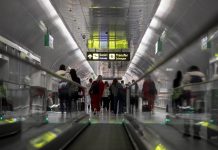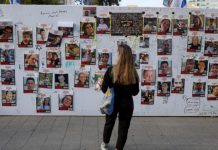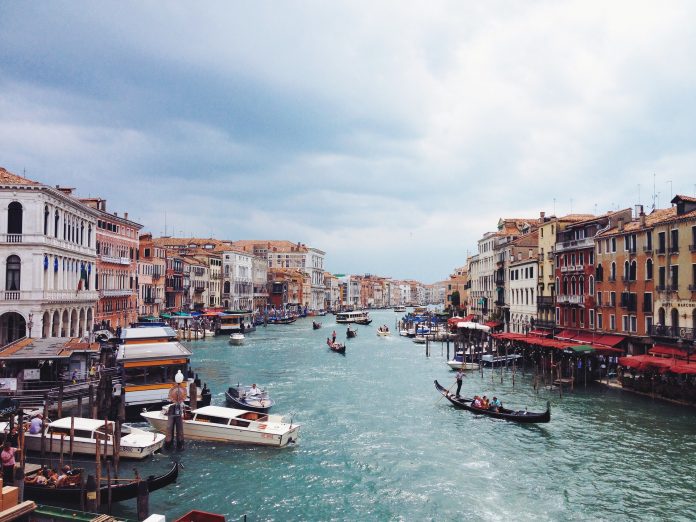Based in Cluj-Napoca, where he lives and works, Serban Savu explores the multiple meanings of visible reality in his works, depicting the image of the surrounding world through the filter of art history.
Savu’s “What Work Is” will be Romania’s contribution at this year’s Venice Biennale.
Savu says that he was prompted by a poem by Philip Levine, he attempted a look at reality beyond propaganda, through the eyes of the worker, a character hanging „between two systems”. The work is an intricate reflection of the complex iconography of work and leisure, inspired from historical realism, its ideology and from the Eastern Bloc propaganda art, the organizers say.
„‘What Work Is’ is actually the title of a poem by Philip Levine, a great American poet I came in contact with by reading his body of work, and I was immediately fascinated by his poetry. So, the theme of work is an older concern of mine, and in, say, the mid-2000s, I was very interested in researching a bit of pre-’89 art, the official art. And I felt that the matter needs to be more minutely looked into and I delved into the themes approached by the socialist realist art of the time, and transposed them into current actuality. So, I looked a little at the world around me, through the perspective of art history, and inevitably, the theme of the worker appeared as the most meaningful. The worker was the pillar of society, he was the pillar the utopian society was built around”, Savu said at the press conference organized on Wednesday at the National Library in Bucharest and dedicated to the project that will represent Romania at the Venice Biennale.
Organized by the Culture Ministry, the Foreign Affairs Ministry and the Romanian Cultural Institute, the exhibition will be housed by the National Pavilion in the Giardini della Biennale, and the New Gallery of the Romanian Institute of Culture and Humanistic Research in Venice.
At the Romanian Pavilion, Savu’s paintings are put on display „in a vast polyptych populated by disoriented protagonists and lethargic extras, caught in the lull between work and rest; the ensemble is completed by a bench-installation that includes the pedestals of four architectural models decorated with mosaics.”
The Brussels-based graphic design studio Atelier Brenda (Sophie Keij and Nana Esi), which was invited to respond to Serban Savu’s project, proposes a site-specific intervention on the facade and in the lobby of the Romanian Pavilion, their large-scale design message representing „a study of non-ideological propaganda, functioning as an advertisement for a new type of social factory.”
The New Gallery of the Romanian Institute of Culture and Humanistic Research in Venice will be transformed into a mosaic workshop for students of the Iasi and Chisinau art universities, in a continuation of the manufacturing tradition of small Venetian workshops, says Agerpres.
„There will be teams of two mosaic artists from each the Iasi Art University and the Art University in Chisinau, who will create over the course of seven months (…) a large-scale mosaic with a relaxing, picnic scene we plan to donate to the city of Chisinau”, said Serban Savu.

















